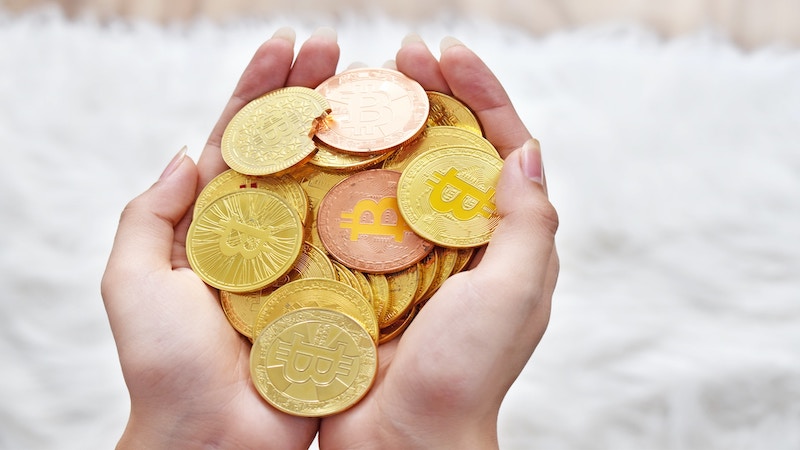Off-chain transactions occur outside of a blockchain network and as a result, are generally cheaper and faster than on-chain transactions but do not fully benefit from the inbuilt security offered by a crypto blockchain.
The crypto space is getting busier and ever-popular by the day, transaction volumes are growing at a rapid pace and this inevitably means traffic.
Not the kind of traffic people want like increased visits to their website, but rather being horribly stuck in slow-moving traffic on a highway.
The highway in crypto terms of course being a blockchain network like Bitcoin or Ethereum for example.
Continuing with the highway analogy, a blockchain such as Bitcoin has its limitations, just as a highway has a fixed amount of lanes.
As the number of cars (transaction blocks) using the highway increases this results in a slowdown and this increased demand can lead to a rise in toll fees, or transaction fees in crypto.
In order to try and reduce or even eliminate fees, speed up transaction times and perhaps even maintain greater anonymity some people go off-chain for their transactions.
The benefits of on-chain or simply regular transactions
Before we can look at what off-chain transactions are we should first acquaint ourselves with on-chain or simply regular transactions taking place on the blockchain.
A blockchain is literally a chain made up of blocks of data.
These blocks are validated by independent nodes on what is known as a decentralised peer-to-peer network, as opposed to a centralised network.
This peer-to-peer setup with no central organisation and an extremely robust system of validation makes a cryptocurrency like Bitcoin rock solid.
In fact, in Bitcoin’s entire existence, it has never been hacked nor has Bitcoin ever been counterfeited or double spent on the blockchain.
Furthermore, the Bitcoin network is highly resilient with a highly impressive uptime of 99.986% since its inception and 100% uptime since 2013.
This level of uptime and resilience is hard to match even by the largest tech companies in the world.
Being so rock solid and secure makes a blockchain and by extension a cryptocurrency like Bitcoin so attractive as a means of holding and transferring value between total strangers.
Despite these advantages, there are limitations and this has led to the use of off-chain transactions.
On-chain transactions also have their downsides
Naturally, on-chain or regular blockchain transactions offer a huge amount of benefits but there are downsides too which have resulted in the growth in demand for off-chain transactions.
Bitcoin transaction fees are expected to rise as demand for Bitcoin and other cryptos rises.
For many users, especially those making small transactions the fees can represent a significant or unfeasible cost.
In addition, getting transactions confirmed on the Bitcoin network could take anything from 10 minutes to several hours.
Compared to legacy banking this is already a big improvement but for many, it’s simply not fast enough!
What are off-chain transactions?
To combat the downsides of on-chain transactions several protocols and services exist enabling off-chain transactions with lower fees and quicker settlements.
Off-chain transactions deal with values externally from the blockchain and usually come about via several methods.
These can include two parties having a private transfer agreement, maybe something like the private sale of a vehicle between two parties or a third party may exist that validates and guarantees a transaction.
Think of a 3rd party like Amazon sitting in the middle to ensure that the correct product ordered from party A in the marketplace makes it to party B as promised and on time and the seller gets the appropriate payment minus fees of course.
Without the Amazon marketplace or a similar 3rd party, the user would be sending money to the seller in the hope that everything will go well.
A huge company like Amazon with its market strength and dominance provides the required level of confidence just as a blockchain does.
Amazon however doesn’t do this for free, there are costs involved just as there are transaction fees involved with blockchain transactions.
Another off-chain method uses a code-based payment mechanism.
In this case, one party purchases a redeemable code to exchange against a crypto asset.
They give this code to a third party who then redeems the code either in the same crypto asset or a different one depending on the service provider.
All of these individual transactions are happening externally and are therefore not restricted by the speed limitations or transaction fee requirements of the blockchain but also do not benefit from the full amount of security benefits afforded by the blockchain.
There is naturally a trade-off, speed and lower fees in exchange for perhaps a small loss in security.
A couple of off-chain transaction providers includes Lightning Network and Liquid Network
One example of an off-chain network is the Lightning Network, a decentralised peer-to-peer network that allows users to transfer Bitcoin off-chain instantly and less transaction fees, so, faster and cheaper than on-chain.
The Lightning Network is built on top of the Bitcoin network and is known as a layer-2 solution.
Another example is the Liquid Network which also offers speed and cost advantages but uses what is known as a sidechain protocol.
The primary difference between layer-2 and sidechain solutions is the difference in their security mechanisms.
Layer-2 relies on the security of the main chain, e.g. the Bitcoin blockchain whereas sidechains have their own security mechanisms.
However, both have pretty much the same goal, to reduce transaction times and fees.
Conclusion
As crypto has exploded in popularity it has inevitably meant an increase in cost and a slowdown in transaction times.
As a crypto blockchain like Bitcoin is pretty hard-wired, alternative ways to scale are continually being explored.
Off-chain transactions are one way to reduce the transaction load and offer users a cheaper and faster alternative even if there are a few tradeoffs involved.








